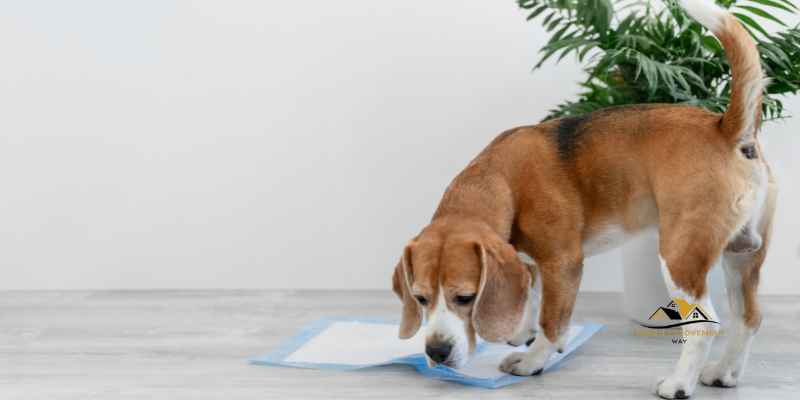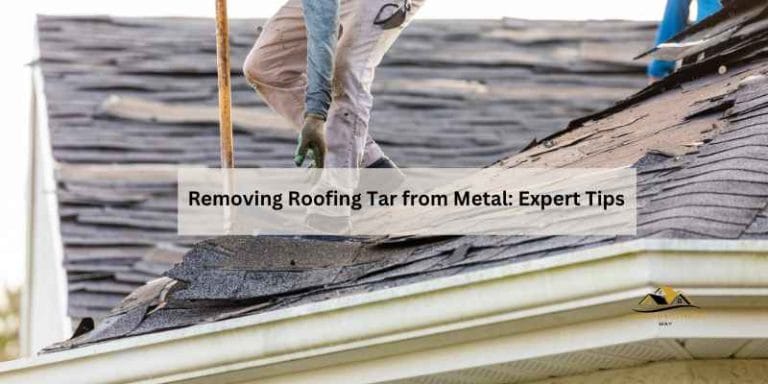Pet Urine Odor Wooden Subflooring: Eliminate Stubborn Odors
To remove pet urine odor from wooden subflooring, mix one cup of vinegar into warm water, add a few drops of grapefruit oil, and scrub the floor with this cleaning solution. Alternatively, use KILZ Original primer to seal and block pet odors and stains.
Pet urine odor on wooden subflooring can be a frustrating and challenging problem to tackle. Not only can it be unpleasant to smell, but it can also cause damage to the wood. Fortunately, there are several solutions available to help eliminate the odor and prevent further damage.
We’ll discuss some effective methods for removing pet urine odor from wooden subflooring, such as using vinegar and grapefruit oil or KILZ Original primer. We’ll also provide tips on how to prevent pet urine odor from returning and causing further damage to your wooden floors.
Understanding The Issue
When pets urinate on wooden subflooring, it can lead to persistent and unpleasant odors that are challenging to eliminate. Understanding the impact of pet urine on wooden subflooring and the common challenges associated with eliminating pet urine odor is crucial for effectively addressing this issue.
The Impact Of Pet Urine On Wooden Subflooring
Pet urine can seep through the surface of wooden subflooring, causing not only an offensive odor but also potential damage to the wood. The urine can penetrate deep into the subfloor, making it difficult to remove the odor completely. Additionally, the acidic nature of pet urine can contribute to the deterioration of the wooden subfloor over time, leading to structural concerns.
Common Challenges With Eliminating Pet Urine Odor
One of the common challenges in eliminating pet urine odor from wooden subflooring is the ability of the urine to permeate deeply into the wood, making it hard to reach and eradicate. Additionally, standard cleaning methods may not effectively neutralize the odor, necessitating specialized treatments and products. Furthermore, if not properly addressed, the lingering odor can persist, impacting the indoor air quality and creating an unpleasant living environment.
Effective Cleaning Solutions
Mix one cup of vinegar into a warm water-filled bucket. Add a few drops of grapefruit oil to the solution. Scrub the floor with this safe cleaning solution, focusing on the most noticeable spots. As you scrub, the odor and stains should gradually disappear.
For tougher odors, sprinkle baking soda generously over the affected area. Leave it on for a few hours or overnight to absorb the odor. Afterwards, sweep or vacuum up the baking soda. Alternatively, you can also use kitty litter in the same manner to absorb the odor.
Enzyme-based cleaners are effective in breaking down the compounds in pet urine that cause odors. Apply the enzyme cleaner according to the manufacturer’s instructions and allow it to sit for the specified time to effectively neutralize the odor at a molecular level.
Sealing And Priming The Subfloor
When dealing with pet urine odor on wooden subflooring, it is crucial to properly seal and prime the subfloor to eliminate odors and prevent future issues.
Applying Kilz Original Primer
1. Clean the subfloor thoroughly to remove any dirt or debris.
2. Apply KILZ Original Primer evenly on the subfloor surface.
3. Allow the primer to dry completely before proceeding with any further steps.
The Process Of Sealing And Blocking Odors
- Start by sealing the subfloor with a high-quality primer like KILZ Original.
- Ensure complete coverage to block odors and stains effectively.
- Allow the primer to dry thoroughly to create a strong barrier against pet urine odors.
By following these steps and using the right primer, you can effectively seal and block pet urine odors from wooden subflooring, ensuring a fresh and clean environment for your home.
Specialized Techniques
Specialized techniques are crucial when dealing with pet urine odor on wooden subflooring. These techniques ensure that the odor is effectively eliminated and the subfloor is properly prepared for further treatment. In this section, we will explore specialized techniques such as using cross-ventilation, the impact of sanding the subfloor, and applying multiple coats of primer.
Using Cross-ventilation
Cross-ventilation is a highly effective technique for reducing pet urine odor in wooden subflooring. By allowing fresh air to circulate through the space, the odors can dissipate more quickly, leading to a fresher and more pleasant environment. This technique is particularly useful during the initial stages of odor removal.
The Impact Of Sanding The Subfloor
Sanding the subfloor can have a significant impact on eliminating pet urine odor. The process of sanding helps to remove the top layer of the subfloor, which may be contaminated with urine and its associated odors. This step prepares the subfloor for further treatment and ensures a more thorough elimination of the odor.
Applying Multiple Coats Of Primer
Applying multiple coats of primer is essential for sealing in any remaining pet urine odor and preventing it from permeating the subfloor. Each coat of primer creates a barrier that effectively traps and neutralizes the odor, ensuring that the subfloor is free from any lingering smells. This technique is a critical step in the odor removal process.
Professional Insights
Dealing with pet urine odor on wooden subflooring can be a challenging and persistent issue for homeowners. Whether you are renovating a home with pet stains or looking for preventative measures, these professional insights will provide valuable tips and techniques to address and mitigate urine odor problems effectively.
Expert Tips For Removing Stubborn Odors
When it comes to removing stubborn pet urine odors from wooden subflooring, it’s essential to use effective cleaning solutions and techniques. Here are expert tips to help you tackle the problem:
- Utilize a mixture of vinegar and warm water with a few drops of grapefruit oil to eliminate the odor.
- Scrub the affected areas with the cleaning solution, focusing on prominent spots to ensure thorough odor and stain removal.
- Consider applying KILZ® Original primer to seal and block pet odors and stains effectively.
Preventing Future Urine Odor Issues
Prevention is key when it comes to avoiding future pet urine odor problems on wooden subflooring. Here are some preventive measures to help you maintain a clean and odor-free environment:
- Regularly clean and maintain your pet’s living area to prevent urine from seeping into the subflooring.
- Train your pets to use designated elimination areas to minimize accidents and reduce the risk of urine odors in the house.
- Consider using protective sealants on wooden subflooring to create a barrier against urine penetration and odors.
Community Experiences

Eliminate pet urine odor from wooden subflooring with a vinegar solution and grapefruit oil for effective cleaning. Scrub the area to remove stains and odors naturally, ensuring a fresh-smelling floor without harsh chemicals.
Real-life Experiences From Reddit Users
Reddit users have shared their experiences with pet urine odor on wooden subflooring, offering valuable insights.
- Users emphasized the importance of prompt action to tackle the issue effectively.
- Several users recommended DIY methods using household items like vinegar and baking soda.
- Others highlighted the efficacy of professional cleaning services for stubborn odors.
Handling Subflooring Saturation
Dealing with subflooring saturation due to pet urine can be challenging but manageable with the right approach.
- Start by identifying the extent of saturation to determine the required treatment.
- Consider using specialized enzymatic cleaners to break down odor-causing compounds effectively.
- Sealing the subfloor with a quality primer can help prevent odors from resurfacing.
Final Steps And Precautions
After treating the subfloor and ensuring complete odor removal, there are final steps and precautions to take to ensure that the wooden subfloor is ready for installing new flooring. These steps are crucial to prevent any remaining odors from seeping through the new flooring and to maintain a clean and fresh environment in your home.
Treating The Subfloor Before Installing New Flooring
Before proceeding with the installation of new flooring, it is essential to treat the subfloor properly to ensure that any remaining traces of pet urine odor are completely eliminated. This involves using specialized products and techniques to seal the subfloor and create a barrier that prevents any lingering odors from affecting the new flooring.
- Thoroughly clean the subfloor to remove any remaining residue and ensure a clean surface for treatment.
- Apply a quality pet odor neutralizer or enzymatic cleaner to the subfloor to break down and eliminate any remaining odor-causing compounds.
- Consider using a specialized primer or sealer designed to seal in pet odors and prevent them from permeating the new flooring.
Ensuring Complete Odor Removal
Complete odor removal is essential to prevent any unpleasant smells from resurfacing after installing new flooring. Taking the necessary precautions to ensure that the subfloor is free of pet urine odor will contribute to a fresh and hygienic living environment.
- Allow sufficient time for the treated subfloor to dry completely before installing new flooring.
- Perform a final inspection to ensure that there are no lingering odors or signs of pet urine on the subfloor.
- If necessary, repeat the odor removal process to address any persistent odors and ensure the subfloor is odor-free.

Frequently Asked Questions
How To Get Pet Urine Smell Out Of Wood Subfloor?
Mix one cup of vinegar into a warm water-filled bucket and add grapefruit oil drops to eliminate the odor. Scrub the floor with the cleaning solution, focusing on prominent spots. If the smell lingers, sprinkle baking soda and vacuum it up.
To seal and block pet odors and stains, use KILZ® Original primer.
Can You Get Dog Pee Smell Out Of Wood Floors?
Mix one cup of vinegar into a warm water-filled bucket and add some drops of grapefruit oil to the solution. Scrub the floor with this safe cleaning solution, concentrating on the most prominent spots. The odor and stains should be disappearing.
If the smell persists, sprinkle baking soda on the area and vacuum or sweep it up afterward. To seal and block pet odors and stains, apply KILZ® Original primer.
Can You Use Kilz On Subfloor For Pet Urine?
Yes, you can use Kilz Original primer on subfloor for pet urine to seal and block odors and stains effectively.
How Do You Stop Wood From Smelling Of Urine?
To stop wood from smelling of urine, clean the area thoroughly with vinegar and water solution. Use baking soda to remove lingering odors. Allow the area to dry completely, and if the odor persists, sprinkle baking soda and vacuum it.
Consider using a primer to seal and block the odor.
Conclusion
Removing pet urine odor from wooden subflooring requires thorough cleaning and sealing. Utilize vinegar and baking soda for effective odor removal. Remember, proper ventilation and cleaning techniques are key to eliminating pet stains and odors successfully. Don’t hesitate to seek professional help if needed.







